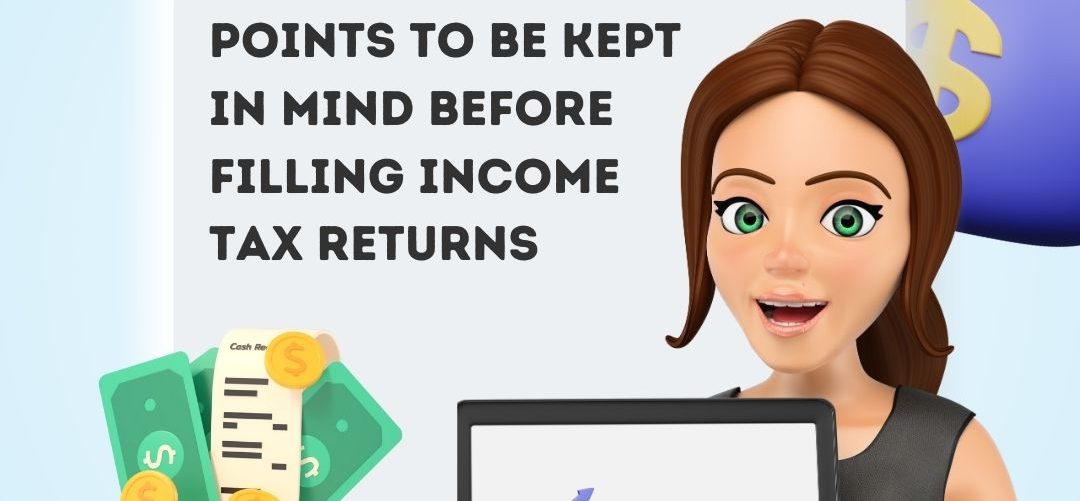Introduction
We are all aware that the income tax filing season for the fiscal year 2020-21 has begun. As a result, every taxpayer anticipates the timely submission of an income tax return. This article discusses some critical factors to remember when submitting your income tax return.
The Selection of a Return Form
The first step in submitting a return is choosing the right form. According to the tax authorities, there are seven forms for reporting income tax. Details are include below;
Individuals and Hindu Undivided Family (HUFs): ITR 1 to 4
- Partnership and Limited Liability Partnership (LLP): ITR 5
- Company: ITR 6
- For claiming Exemption: ITR 7
Points to Remember Filing the Income Return Form
The following are some things to keep in mind when filling out your income tax form.
Disclosure of Interest from Bank Deposits and NSC Certificates
Although the IT department removed the deduction for interest income a few years ago, many people still prefer not to reveal the money obtained from such bank deposits and NSC certificates. The interest, no matter how tiny, must be report on the form. Its interest revenue must not be overlook. In most circumstances, the employer will not take interest income into account when computing the employee’s TDS. The taxpayer is required to claim a deduction for interest on Saving Bank Accounts under Section 80TTA of the Income Tax Act of 1961.
The deduction for investment under Sections 80C, 80CCC, and 80 CCD is exempt up to Rs 1.50 lakh.
Furthermore, the deduction for investment under Section 80C, contribution to a pension fund under Section 80CCC, or employer contribution to a pension scheme under Section 80CCD is exempt up to Rs 1.50 lakh. Section 80C advantages include tuition expenses paid by a father for his children and repayment of the principal amount of a house loan.
The Clubbing of Income of a Spouse or minor child
According to the requirements of the Income Tax Act of 1961, the taxpayer’s minor kid and spouse’s income can be combined in particular instances. In such a circumstance, it is critical to utilize the right form when completing an income tax return.
The right technique to compute the taxable amount is to first apply a 10% surcharge to the taxable amount, followed by a 4% cess on the taxable amount.
Use caution while calculating Cess and Surcharge
It is a typical error when calculating the education cess and surcharge on the taxable due amount. It should be note that if total income exceeds Rs. 100 lahks in an assessment year, a 10% surcharge is not need to be apply to the tax payable amount. However, even if total income surpasses 100 lahks in an assessment year, a 4% education cess must be apply to the tax payable amount.
The right technique to compute the taxable amount is to first apply a 10% surcharge to the taxable amount, followed by a 4% cess on the taxable amount.
Safekeeping of key documents for future needs
Although the requirement for the attachment of different papers, certifications, and so on with the return form has been waived, the documents must not be discarded since the aforementioned documents may be required in the future. It is never known if the tax authorities would require the taxpayer to produce papers in the event of a scrutiny process, which is usually launch to verify claims stated on the return form.
Double checking of essential information such as bank account details, PAN No., Address for communication, etc.
In rare situations, the taxpayer may provide the incorrect PAN number. The 10-digit PAN should be mention accurately. Similarly, the communication address must be specified with care. Since all notices will be post by the tax authorities at the stated location.
In the event of a return, the bank account information must also be fill out accurately. Because the reimbursement will be transmit via ECS, the MICR code must be enter carefully.

